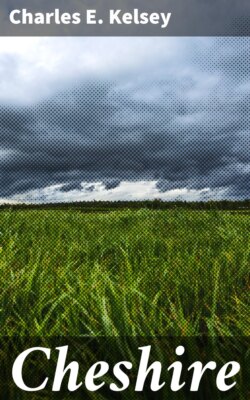Читать книгу Cheshire - Charles E. Kelsey - Страница 3
На сайте Литреса книга снята с продажи.
PREFACE
ОглавлениеTable of Contents
The aim of the present volume in the Oxford Series of County Histories for Schools is to assist the study of the progress of the English people by an examination of local antiquities, visits to ancient sites and buildings, and suggestions of big national movements from local incident. An attempt is made to foster the powers of observation in children by showing them how to connect various styles of architecture, for instance, with successive stages in the story of their county, and to construct from familiar objects the broad outlines of national history. Thus it is hoped that sooner or later the teaching of history may become, to some extent, an out-of-school subject and take its place side by side with outdoor Nature-study and Practical Geography in the curriculum of our schools.
In rural districts this end is obviously more easily attainable than in large industrial centres. In the latter the expense of moving classes of children from their schools to visit a site some miles distant would be no doubt considerable; but is it too visionary to hope that before long a motor-bus, capable of carrying a class of thirty or forty boys and girls, will be deemed by Educational Committees a necessary part of their 'apparatus'?
Apart from the educative value of such work there would, as the children grow up, arise a body of public opinion which could give valuable help in saving historic sites and buildings from loss or destruction, and preventing the removal of antiquities from their natural home. Cheshire has suffered perhaps more than her share of both these evils, and looks with sorrowful eyes at many of her treasures housed in the museums of towns beyond her borders.
All students of Cheshire history owe much to Ormerod's great work. But his history is largely genealogical, and personally I wish to acknowledge a greater debt to the labours and transactions of local societies, particularly the Chester Archaeological Society and the Lancashire and Cheshire Antiquarian Society. Many learned members of these two bodies have made most important contributions to our knowledge of ancient and mediaeval Cheshire within the most recent years. Among other works consulted I may mention the Palatine Note Book, Cheshire Notes and Queries, and Morris's Diocesan History of Chester. I have received kindly assistance from several Cheshire clergymen, and to all who have given me permission to take photographs within their churches I express my thanks.
The maps, drawings, and photographs are original, with few exceptions. I am indebted to the Council of the Chester Archaeological Society, and the Grosvenor Museum for the loan of the block of a Roman tombstone from a photograph by Mr. R. Newstead, and to Mr. Alfred Newstead, Curator of the Museum, for photographs of the Runic stone and Roman altar.
The Rev. J. F. Tristram, of the Hulme Grammar School, read the two geological chapters and made valuable suggestions. To the Clarendon Press I am grateful for much kind help and criticism.
The Hulme Grammar School,
Manchester,
July, 1911.
